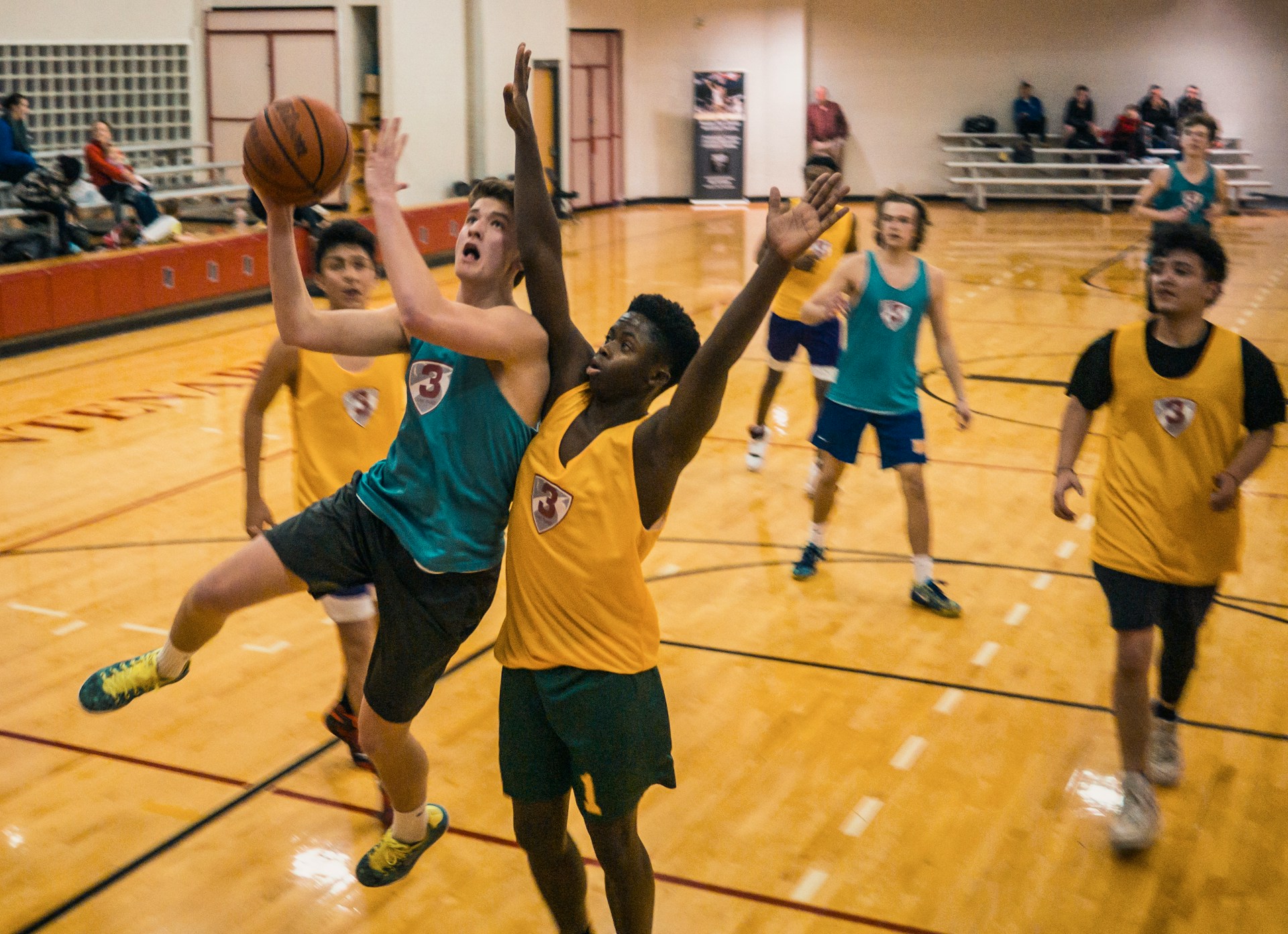In the world of sports, athletes are always on the prowl for an edge – a way to outperform their competitors, achieve their goals, and stay at the top of their game. While physical training and skill development are evident components of an athlete’s regime, an essential aspect often overlooked is mental preparation. This is where visualization comes into play, a powerful mental technique that has been shown to enhance performance in various sports, including basketball.
The Power of Visualization in Sports
Visualization, also referred to as mental imagery or mental rehearsal, involves creating or recreating experiences in your mind. It’s like a mental movie where athletes imagine themselves executing perfect performances, making the right moves, and winning the competition. The principle behind this technique is that the mind cannot distinguish between a real and an imagined event.
Additional reading : Which detailed video review practices can help UK basketball players identify weaknesses in their defensive game?
According to a study indexed by PubMed, a free search engine accessing primarily the MEDLINE database of references and abstracts on life sciences and biomedical topics, imagery has been shown to improve athletic performance in several sports. The use of visualization in sports dates back to the 1960s when slalom skiers used imagery to ‘run’ the course in their minds before the actual race.
Basketball players, especially in the UK where the sport is gaining traction, can tremendously benefit from incorporating visualization techniques into their training regime. Research indexed on Google Scholar and CrossRef, an official Digital Object Identifier (DOI) Registration Agency of the International DOI Foundation, has also indicated that athletes who visualize their performance tend to outdo those who do not.
This might interest you : Which detailed video review practices can help UK basketball players identify weaknesses in their defensive game?
Techniques for Effective Visualization
Effective visualization is more than just daydreaming about success. It involves detailed and systematic mental rehearsal of your performance in the game. This section provides some visualization techniques that have been notably effective in improving performance in sports.
Firstly, you need to find a quiet and comfortable space where you can focus without interruptions. It is crucial to relax and clear your mind of any distracting thoughts. You can achieve this by taking deep breaths or practicing meditation before starting with the visualization.
Once your mind is clear, start envisioning the game. Imagine yourself in the basketball court. See the ball in your hands, hear the sound of your shoes squeaking on the floor, feel the weight of the ball as you dribble it. The more detail you can incorporate into your imagery, the more effective it will be.
Next, visualize your performance. See yourself executing perfectly all the movements and tactics you’ve practiced in training. Imagine yourself scoring points, defending effectively and assisting your teammates. Always visualize success and never allow negative outcomes to sneak into your mental rehearsal.
How Visualization Enhances Performance
Visualization works on the principle that the mind has a significant influence over the body. When you repeatedly visualize positive outcomes, your mind starts to believe in them, and this belief translates to improved performance.
There’s scientific data to support this concept. Research cited in PubMed shows that imagery activates the same brain structures involved during actual physical execution. This implies that visualizing a basketball throw can enhance the neural pathways involved in the physical act of throwing the ball.
Moreover, visualization also helps athletes cope with pressure and manage competition stress. It can enhance focus and concentration, and help players remain calm and composed during the game. This is particularly important in high-stakes sports like basketball, where a lapse in concentration can cost the team points.
Application of Visualization in Basketball
In basketball, visualization can be particularly effective in improving various aspects of the game. Players can use this technique to rehearse their shooting, dribbling, and passing skills. They can visualize themselves making accurate shots from different locations on the court, making successful passes, and efficiently dribbling past opponents.
Visualization can also be useful in game strategy. Players can envision different game scenarios and responses, helping them to be prepared for any situation that may arise during the game. For instance, a player can visualize how they would respond if their team is trailing by a few points in the final minutes of the game, or how they would react to a strong defensive opposition.
Finally, visualization can also be used to build confidence and self-belief. Players can imagine themselves performing successfully in front of a massive crowd, dealing with the pressure of competition, and celebrating the victory. This can significantly boost their morale and self-confidence, which are critical for success in sports.
Conclusion
Visualization is a powerful tool in sports, and UK basketball players can use it to improve their performance and gain a competitive edge. By consistently practicing visualization techniques, players can enhance their skills, manage competition stress, devise effective game strategies and build self-confidence. While physical abilities and skills are vital in basketball, mental preparation can be the key to unlocking exceptional performance.
The Role of Sport Psychology in Visualization Techniques
Understanding the indispensable role of sport psychology in performance analysis is key to appreciating the effectiveness of visualization techniques. Sport psychology expands on the principles of psychology and applies them to sports settings. It is a discipline that focuses on the mind-body connection and its impact on athletic performance.
Sport psychologists have originated and perfected many of the visualization techniques used by athletes today. Through their research, documented in esteemed databases like PubMed and CrossRef Google, and their application of principles of psychology to the realm of sports, they have demonstrated that mental toughness is as crucial as physical strength in achieving optimum sports performance.
Basketball players, especially, can use sport psychology principles to enhance their mental toughness. Imagery training, a key technique in sport psychology, allows players to visualize different game scenarios and their responses to them, thereby preparing them for the unpredictability of the game.
Research indexed on Google Scholar and DOI CrossRef has found that athletes who regularly engage in imagery training have better mental health, are more resilient, and exhibit better performance under pressure. This is because imagery training helps athletes to mentally rehearse their responses to various game situations, thereby equipping them to deal with these circumstances in real life.
The main idea is to make mental rehearsal an integral part of athletes’ training routines. Players should be taught how to use imagery to visualize themselves executing techniques flawlessly, responding optimally to various game scenarios, and winning games. This isn’t just about passive daydreaming but rather, it’s an active, systematic, and purposeful process of mental rehearsal.
Conclusion: Harnessing the Power of Visualization
In conclusion, visualization is a potent tool that has the power to significantly boost an athlete’s performance. The science behind it is solid – studies and articles indexed on PubMed Crossref, DOI PubMed, and PMC Free all testify to its effectiveness.
It’s a technique that goes beyond the physical; it taps into the athlete’s psyche, fostering mental toughness, and resilience. It’s not just about seeing the game in your mind, it’s about feeling it, smelling it, hearing it – it’s about completely immersing oneself in the experience.
For UK basketball players looking to elevate their game, incorporating visualization into their training regime can be transformative. It can help them not only refine their techniques but also mentally prepare for the rigours of the game.
In the high-pressure world of sports, where a fraction of a second can make the difference between victory and defeat, mental preparedness can be the secret weapon that sets an athlete apart. It’s the key that can unlock the door to exceptional performance. After all, the body achieves what the mind believes.
By keeping this in mind and integrating visualization into their training, UK basketball players can hopefully experience significant improvements in their performance, ultimately helping to raise the profile of the sport nationally. Just like the slalom skiers in the 1960s, today’s basketball players too can ‘run their game’ in their mind before they hit the court, ready to conquer.






